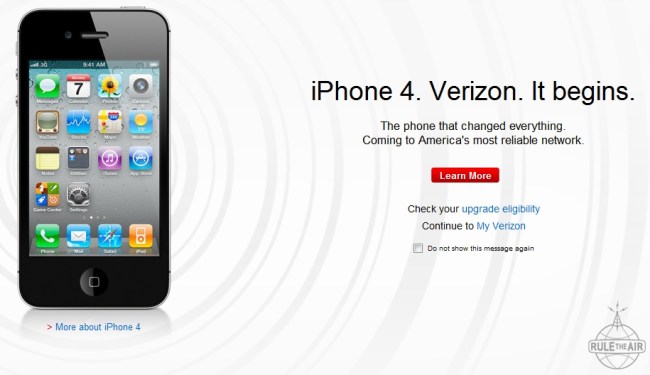
It is 100% official. After years of dominating the market under AT&T exclusivity, Apple’s industry-changing iPhone has finally been unleashed on the wider world with the release of the Verizon iPhone 4.
The new-old phone went on sale at 7 a.m. EST this morning, with reports indicating a lighter turnout than has historically been seen for new iProducts. Apple’s flagship New York City store had just eight people lined up when the clock ticked over to the metaphorical dawn of a new day for cellphone users, according to CNNMoney. Interestingly, none of the eight lined up jumped providers from AT&T to Verizon. Two were new customers and the rest jumped ship from T-Mobile.
Don’t let the seemingly quiet launch give you the wrong impression, however. A recent Yankee Group study estimates that 2.5 million AT&T customers will be trying their luck with a Verizon switch, their decisions ushered along by increasing complaints of dropped AT&T calls and generally unreliable service. Any mass defection could ease those woes, as it is believed that the unreliable AT&T service stems from the increased network loads created by the provider’s iPhone exclusivity.
As expected, AT&T fired back this morning with a new deal meant to convince a few of those potential 2.5 million ship-jumpers to stick around. The company launched a “Mobile to Any Mobile” plan for new and existing contracts, which offers unlimited calling to any mobile number for free. The catch is that in order to qualify for the upgraded plan, buyers must already be paying for or bump themselves up to unlimited monthly texts, which adds an extra $20 to monthly bills. If you already have AT&T’s unlimited text plan the “Mobile to Any Mobile” offer is free, though it is not an automatic upgrade, meaning you’ll have to actually go and make the change to your account.
Editors' Recommendations
- A big iPhone update is right around the corner
- How to fix iMessage activation errors on your iPhone
- One of the most iconic iPhone accessories is back — and it’s great
- Are you having iPhone alarm problems? A fix is coming soon
- Best iPhone 14 deals: Unlocked and refurbished


